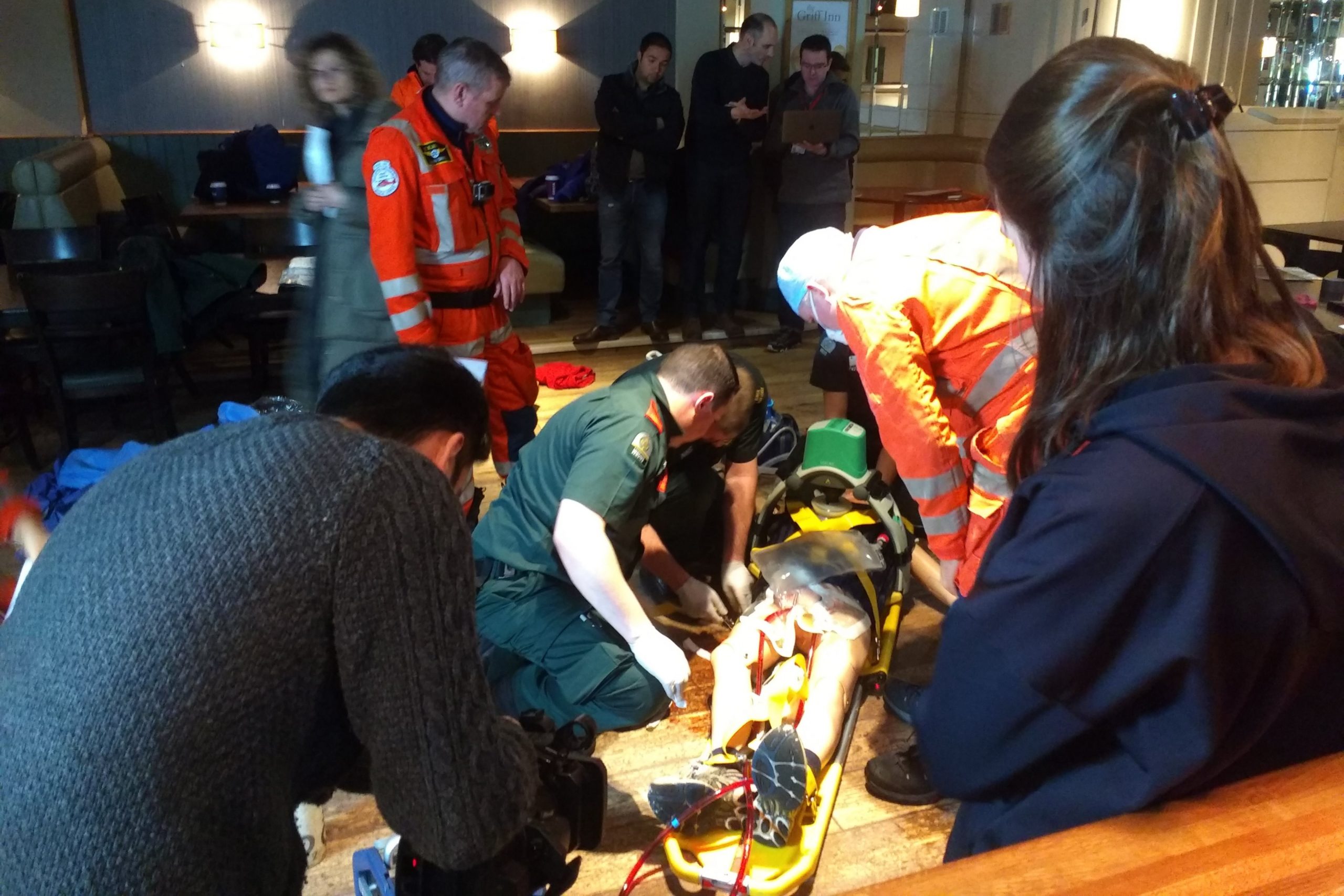
Penetrating and non-penetrating cardiac trauma: an overview
Let’s talk about trauma, and more specifically cardiac trauma. They are divided into penetrating and non-penetrating and it is important to know both
Non-penetrating cardiac trauma
Closed cardiac trauma accounts for about 10 per cent of all traumatic heart disease.
Motion-related injuries secondary to sudden deceleration of the body (motor vehicle accidents) and compression of the rib cage (e.g. impact against the steering wheel, blow during an athletic performance, manoeuvres during cardiac massage) are the most frequent causes of closed heart trauma.
Myocardial changes range from small ecchymotic areas in the subepicardium to transmural lesions with haemorrhage and myocardial necrosis.
Pericarditis is present in most patients and may be complicated by pericardial fissuring or rupture or by cardiac tamponade.
Less frequent complications include rupture of the papillary muscle or chordae tendineae and coronary laceration.
Patients mainly experience precordial pain similar to that associated with myocardial infarction.
However, musculoskeletal pain secondary to chest wall injury can confuse the clinical picture. Heart failure with uncle gestation is unusual unless the myocardial injury is extensive or valvular dysfunction has occurred.
With severe trauma, life-threatening ventricular arrhythmias may occur and are a frequent cause of death in such patients.
The electrocardiogram often shows non-specific repolarisation abnormalities or ST segment and T wave changes typical of acute pericarditis.
If the myocardial lesion is extensive, localised ST-segment elevation and pathological Q waves may be present.
Elevation of the myocardial component of creatine kinase-MB (Creatine Kinase Muscle Band, CKMB) supports a diagnosis of cardiac contusion but its diagnostic use is limited in patients with massive thoracic trauma because the CK-MB fraction may be elevated due to severe musculoskeletal injury.
Newer markers of myocardial injury, such as troponins T and I, may be more specific in making a diagnosis of myocardial contusion.
Echocardiography is a useful non-invasive tool for assessing abnormalities of parietal kinetics, valvular dysfunction and the presence of haemodynamically significant pericardial effusion.
The treatment of patients with cardiac contusion is similar to that of myocardial infarction, with initial observation and subsequent monitoring, followed by a gradual increase in physical activity.
Anticoagulants and thrombolytic agents are contraindicated because of the risk of haemorrhage in the myocardium and pericardial sac.
Most patients who survive the initial injury will have partial or complete recovery of myocardial function.
However, patients should be monitored for late complications including aneurysm formation, papillary or free wall muscle rupture and significant arrhythmias.
QUALITY DAE? VISIT THE ZOLL BOOTH AT EMERGENCY EXPO
Penetrating cardiac trauma
Penetrating cardiac trauma is often the effect of physical violence secondary to gunshot or gunshot wounds.
Similar injuries may be the result of inward displacement of bone fragments or fractured ribs secondary to closed chest trauma.
Iatrogenic trauma may occur during the placement of catheters or central venous systems.
In traumatic perforations, the right ventricle is the most often involved cardiac chamber due to its anterior location in the chest, and is associated with pericardial laceration.
Symptoms are related to the size of the wound and the nature of the concomitant pericardial injury.
If the pericardium remains open, extravasated blood drains freely into the mediastinum and pleural cavity and symptoms are related to the resulting haemothorax.
If the pericardial sac restricts blood loss, pericardial tamponade occurs.
In this situation, treatment includes emergency pericardiocentesis, followed by surgical closure of the emergent wound.
Small penetrating wounds to the ventricles that are not associated with extensive cardiac damage have the highest survival rates.
Late complications include chronic pericarditis, arrhythmias, aneurysm formation and interventricular septal defects.
Read Also:
Emergency Live Even More…Live: Download The New Free App Of Your Newspaper For IOS And Android
What Is Heart Failure And How Can It Be Recognised?
Heart: What Is A Heart Attack And How Do We Intervene?
Do You Have Heart Palpitations? Here Is What They Are And What They Indicate
Heart Attack Symptoms: What To Do In An Emergency, The Role Of CPR
Manual Ventilation, 5 Things To Keep In Mind
FDA Approves Recarbio To Treat Hospital-Acquired And Ventilator-Associated Bacterial Pneumonia
Pulmonary Ventilation In Ambulances: Increasing Patient Stay Times, Essential Excellence Responses
Ambu Bag: Characteristics And How To Use The Self-Expanding Balloon
AMBU: The Impact Of Mechanical Ventilation On The Effectiveness Of CPR
Why Use Barrier Device When Giving CPR



